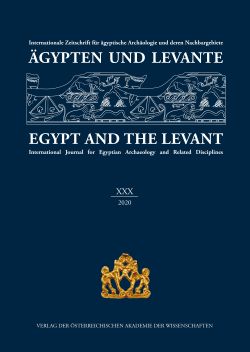
Ägypten und Levante 30, pp. 495-533, 2020/12/29
Internationale Zeitschrift für ägyptische Archäologie und deren Nachbargebiete
International Journal for Egyptian Archaeology and Related Disciplines
Jubiläumsausgabe – 30 Jahre Ägypten und Levante
Anniversary Edition – 30 Years of Egypt and the Levant
So-called ‘toggle pins’ are a common find, not only in the Middle, but already in the Early Bronze Age. When found in tombs, they can accompany males and females and the common opinion is that they held together a burial shroud, or specifically the garment of the deceased. The first metal toggle pins appear in the Chalcolithic Period, mainly in south-eastern Anatolia. They became common in Syro-Mesopotamia from the middle of the Early Bronze Age onwards. Most of the earliest examples are unperforated, but a few perforated specimens are attested already from the end of the 4th millennium BCE. Clothing pins were introduced into the southern Levant at the end of the Early Bronze Age, but perforated pins are few in number, getting common only at the beginning of the Middle Bronze Age and are then widely diffused in the region until the end of the period. Plain pins and pins with cylindrical heads and ribbed decoration are the most common types at Tell el-Dabʿa and the rest of the Eastern Delta, where pins do not show as much variety as those from the southern Levant. In all, forms are quite comparable and spread across a wide area, which is not astonishing as the shape is designed for a specific practical use. Nonetheless, distinct forms, decorations or materials might point to a common cultural background of the owners, especially as clothing pins are an entirely non-Egyptian type of object.
Keywords: clothing pins, Tell el-Dab’a, Eastern Delta, Levant, foreign relations